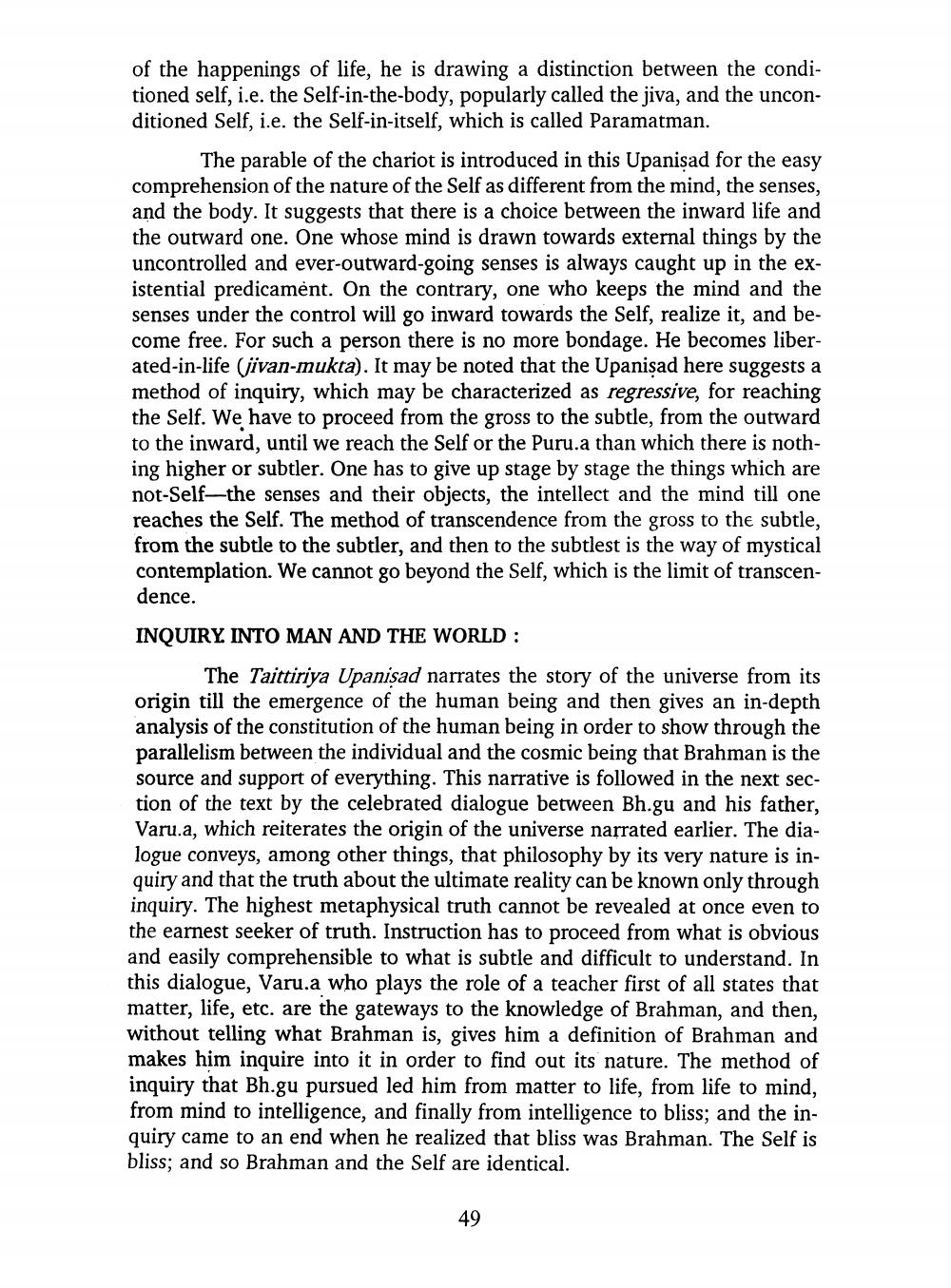________________
of the happenings of life, he is drawing a distinction between the conditioned self, i.e. the Self-in-the-body, popularly called the jiva, and the unconditioned Self, i.e. the Self-in-itself, which is called Paramatman.
The parable of the chariot is introduced in this Upanisad for the easy comprehension of the nature of the Self as different from the mind, the senses, and the body. It suggests that there is a choice between the inward life and the outward one. One whose mind is drawn towards external things by the uncontrolled and ever-outward-going senses is always caught up in the existential predicament. On the contrary, one who keeps the mind and the senses under the control will go inward towards the Self, realize it, and become free. For such a person there is no more bondage. He becomes liberated-in-life (jivan-mukta). It may be noted that the Upanisad here suggests a method of inquiry, which may be characterized as regressive, for reaching the Self. We have to proceed from the gross to the subtle, from the outward to the inward, until we reach the Self or the Puru.a than which there is nothing higher or subtler. One has to give up stage by stage the things which are not-Self-the senses and their objects, the intellect and the mind till one reaches the Self. The method of transcendence from the gross to the subtle, from the subtle to the subtler, and then to the subtlest is the way of mystical contemplation. We cannot go beyond the Self, which is the limit of transcendence.
INQUIRY. INTO MAN AND THE WORLD :
The Taittiriya Upanisad narrates the story of the universe from its origin till the emergence of the human being and then gives an in-depth analysis of the constitution of the human being in order to show through the parallelism between the individual and the cosmic being that Brahman is the source and support of everything. This narrative is followed in the next section of the text by the celebrated dialogue between Bh.gu and his father, Varu.a, which reiterates the origin of the universe narrated earlier. The dialogue conveys, among other things, that philosophy by its very nature is inquiry and that the truth about the ultimate reality can be known only through inquiry. The highest metaphysical truth cannot be revealed at once even to the earnest seeker of truth. Instruction has to proceed from what is obvious and easily comprehensible to what is subtle and difficult to understand. In this dialogue, Varu.a who plays the role of a teacher first of all states that matter, life, etc. are the gateways to the knowledge of Brahman, and then, without telling what Brahman is, gives him a definition of Brahman and makes him inquire into it in order to find out its nature. The method of inquiry that Bh.gu pursued led him from matter to life, from life to mind, from mind to intelligence, and finally from intelligence to bliss; and the inquiry came to an end when he realized that bliss was Brahman. The Self is bliss; and so Brahman and the Self are identical.
49




